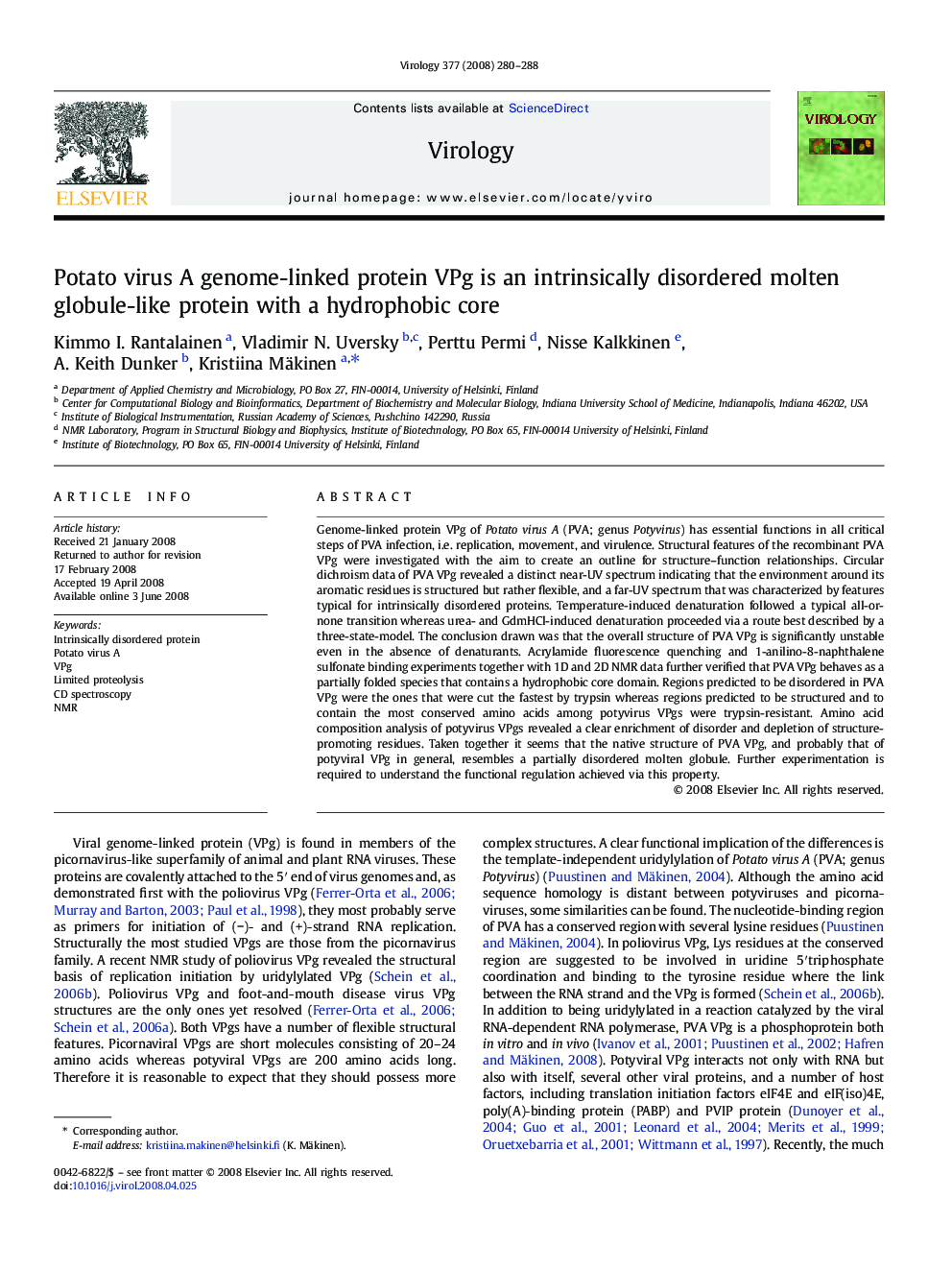| Article ID | Journal | Published Year | Pages | File Type |
|---|---|---|---|---|
| 3425483 | Virology | 2008 | 9 Pages |
Genome-linked protein VPg of Potato virus A (PVA; genus Potyvirus) has essential functions in all critical steps of PVA infection, i.e. replication, movement, and virulence. Structural features of the recombinant PVA VPg were investigated with the aim to create an outline for structure–function relationships. Circular dichroism data of PVA VPg revealed a distinct near-UV spectrum indicating that the environment around its aromatic residues is structured but rather flexible, and a far-UV spectrum that was characterized by features typical for intrinsically disordered proteins. Temperature-induced denaturation followed a typical all-or-none transition whereas urea- and GdmHCl-induced denaturation proceeded via a route best described by a three-state-model. The conclusion drawn was that the overall structure of PVA VPg is significantly unstable even in the absence of denaturants. Acrylamide fluorescence quenching and 1-anilino-8-naphthalene sulfonate binding experiments together with 1D and 2D NMR data further verified that PVA VPg behaves as a partially folded species that contains a hydrophobic core domain. Regions predicted to be disordered in PVA VPg were the ones that were cut the fastest by trypsin whereas regions predicted to be structured and to contain the most conserved amino acids among potyvirus VPgs were trypsin-resistant. Amino acid composition analysis of potyvirus VPgs revealed a clear enrichment of disorder and depletion of structure-promoting residues. Taken together it seems that the native structure of PVA VPg, and probably that of potyviral VPg in general, resembles a partially disordered molten globule. Further experimentation is required to understand the functional regulation achieved via this property.
